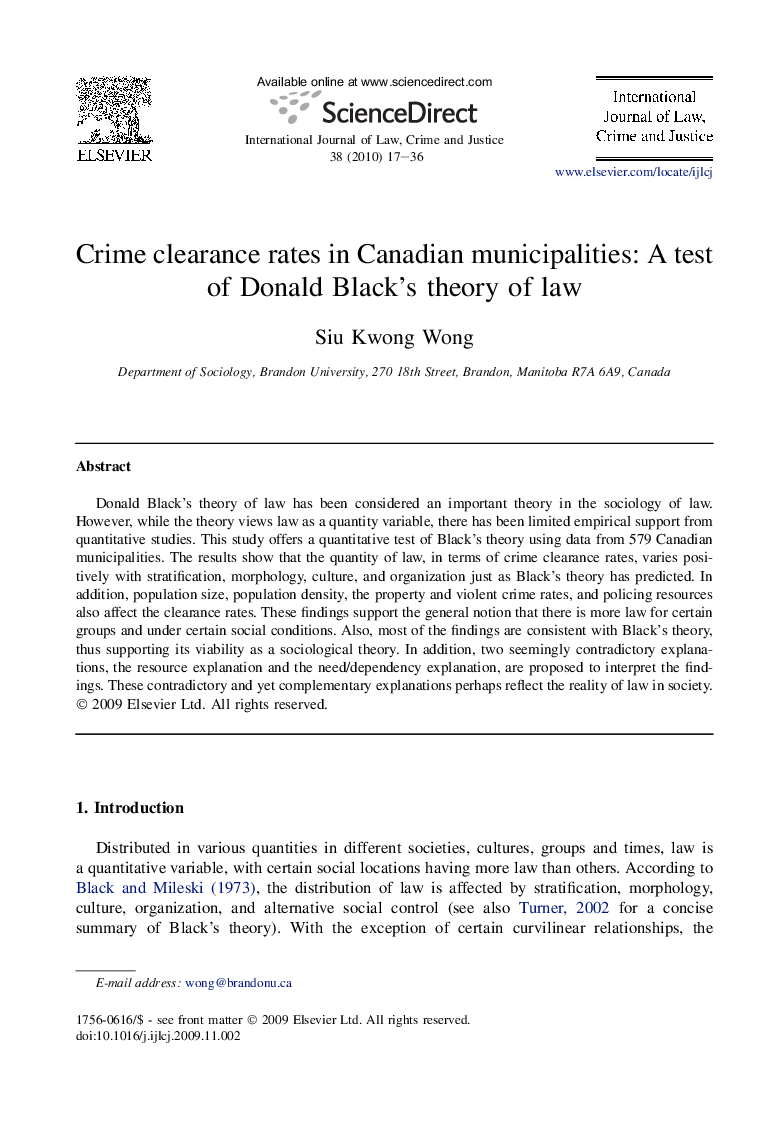| Article ID | Journal | Published Year | Pages | File Type |
|---|---|---|---|---|
| 1098077 | International Journal of Law, Crime and Justice | 2010 | 20 Pages |
Donald Black's theory of law has been considered an important theory in the sociology of law. However, while the theory views law as a quantity variable, there has been limited empirical support from quantitative studies. This study offers a quantitative test of Black's theory using data from 579 Canadian municipalities. The results show that the quantity of law, in terms of crime clearance rates, varies positively with stratification, morphology, culture, and organization just as Black's theory has predicted. In addition, population size, population density, the property and violent crime rates, and policing resources also affect the clearance rates. These findings support the general notion that there is more law for certain groups and under certain social conditions. Also, most of the findings are consistent with Black's theory, thus supporting its viability as a sociological theory. In addition, two seemingly contradictory explanations, the resource explanation and the need/dependency explanation, are proposed to interpret the findings. These contradictory and yet complementary explanations perhaps reflect the reality of law in society.
